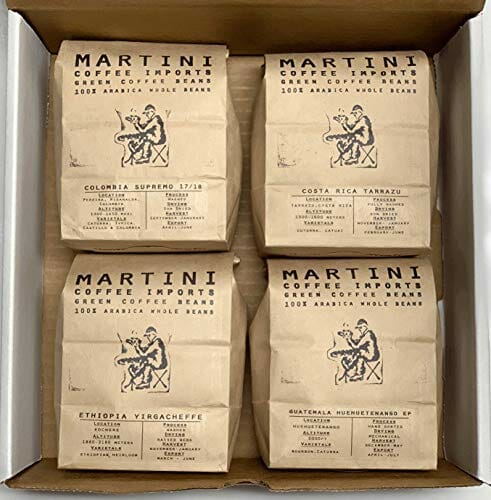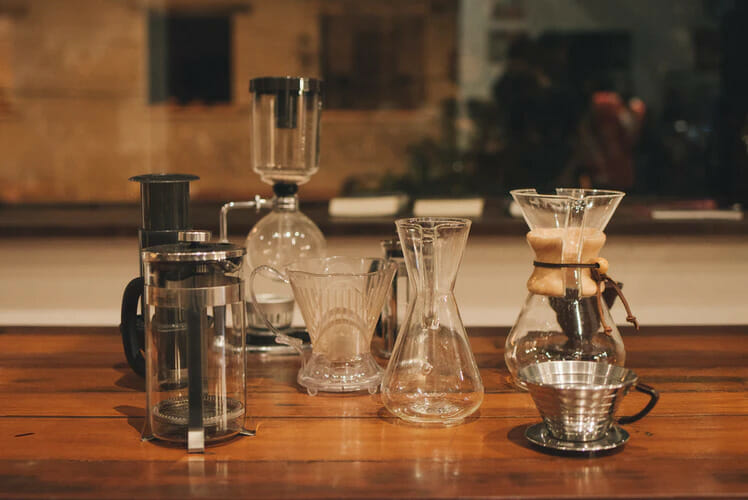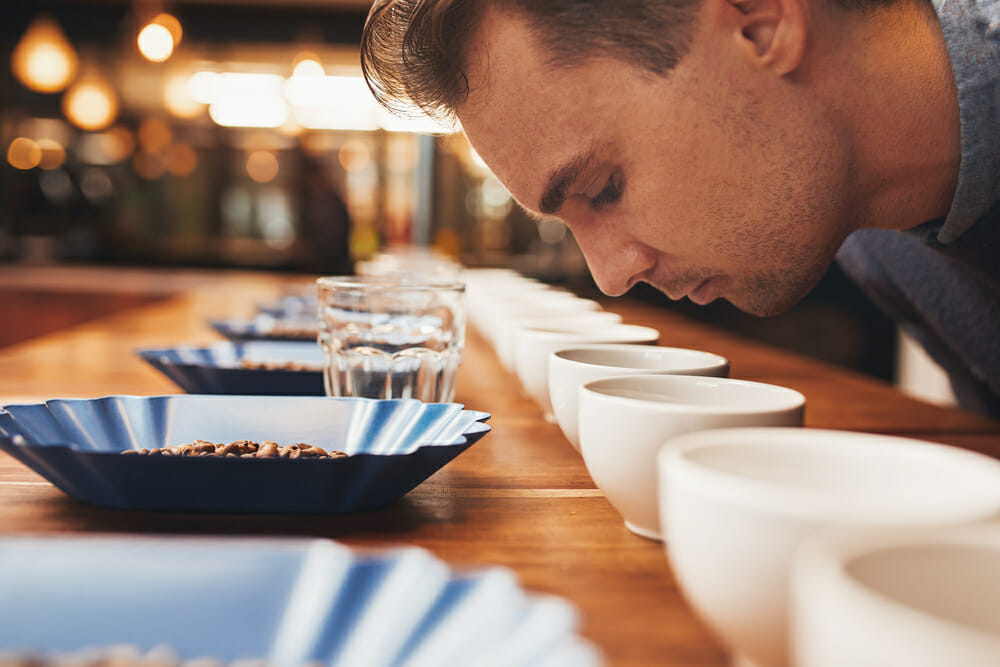Everyone starts somewhere. Are you a casual coffee lover who’s interested in learning more about the craft of specialty coffee and gain that true coffee aficionado status? Look no further.
In this article on how to become a coffee aficionado, I will spill the beans on what makes a great cup of coffee and neat tips and tricks, from how to pick the coffee beans, how to brew coffee, to how to enjoy and taste coffee.
Get a jump start from zero to pro here.
Picking Coffee Beans
The key to making good coffee is knowing coffee. First, we start with the beans.
So many brands and labels, where should you start? Where do coffee beans come from anyway? Are they like… rice? Some sort of fruit seeds? What is coffee??
Coffee Origins
Where Coffee Comes From
If you miss out on my previous article explaining the coffee journey from plant to cup, you may not know the answers to some of my previous questions.
Don’t worry. Here’s a summary.
At its root, coffee beans come from the fruit of the coffee plants that bloom beautiful and fragrant white flowers. After the flowers wither and fall off, there form green coffee berries.
Once they turn ripened red or yellow, the coffee cherries are harvested, each of which usually holds 2 seeds AKA coffee beans to be processed and roasted.
That’s some helpful knowledge to kick off your coffee aficionado study session. But when looking for coffee for brewing, what you need to focus on is the geographical origins of the coffee plants.
Where Coffee Comes From Geographically
This factor can make a huge difference in the final cup of coffee such as the aroma, body, taste, etc.
Each coffee-growing region boasts a different soil composition, climate, altitude, coffee plant, and farming and processing practices that can bring a breath of fresh air to the oh-so-simple cup of Joe.
Below is a list of popular coffee-growing regions in the world:
- North America and the Caribbean
- Mexico: This one of the largest coffee-producing countries in the world is popular for its dark roasts with a distinct aroma and deep and sharp flavor notes, especially great for making coffee blends.
- Puerto Rico: This 6th largest coffee exporter is known for its gourmet Arabica varieties that are balanced in both body, acidity, and flavor, heightened by fruity aroma and notes.
- Hawaii: The area is best known for its rich, aromatic, and medium-bodied Kona coffee. It’s grown on the fluffy and nutrient-rich volcano soils that also provide the right climate, altitude, and much-needed shades.
- Central America
- Guatemala: The popular Huehuetenango is one of the 3 main coffee-growing regions in Guatemala. Rich volcanic soil and microclimates help produce fuller-bodied coffee with deep chocolate undertones and high flavor complexities.
- Costa Rica: Costa Rican wet-processed Arabica coffee is bright yet balanced and medium-bodied.
- South America
- Colombia: Thanks to its high-altitude landscape with a lot of terrains, the second largest coffee producer prides itself on its mild coffees that are balanced in both acidity and taste.
- Brazil: Another Latin American country that’s well-known for its coffees is Brazil, the top producer in the world. The country supplies both Arabica and Robusta beans that are sweet, light, and low-acid.
- Africa
- Ethiopia: The first coffee plants were likely discovered in this very land. A cup of Ethiopian coffee is bold, rich, flavorful, and full-bodied with an earthy undertone.
- Kenya: Kenyan coffee is grown on the foothills of the mountain mostly by small farmers with their own unique coffee grading system. Expect a fruity cup of coffee that’s fragrant, complex, and full-bodied.
- Ivory Coast: One of the biggest producers of Robusta coffee is the go-to supplier for flavorful and aromatic espresso blends.
- Arabian Peninsula
- Yemen: Dry-processed coffees here are still produced by small coffee farms using age-old farming practices, supplying rich coffees with a distinct taste and aroma.
- Asia
- Indonesia: This land of islands in Asia is well-known for its high-quality coffees that are full-bodied, deep, and pronounced with a mild level of acidity thanks to its warm and rainy climate and volcanoes.
- Vietnam: Growing in popularity with its famous distinctive Vietnamese coffee, Vietnam is also becoming the 2nd largest producer in the world with its mild, light, and balanced Robusta coffee that’s often used for blends.
- Thailand: With the Arabica Catimor coffee variety being the most prominent in the country, improved farming and processing practices are seeing the rise of amazing flavors from their skilled roasters and baristas. Anaerobic processing of coffee beans is also becoming popular in Thailand.

Coffee-Growing Factors
Climate
One of the most important factors affecting the growth and quality of coffee is the climate. Depending on the type of coffee plant, cool to warm tropical climates and steady rainfalls are usually optimal.
Altitude
According to this research, higher altitudes of around 1,950 m/6,400 ft above sea level with open or medium shades and an early or middle harvest period can increase the potential of producing higher quality coffee beans.
The current minimum altitude for the production of coffee is approximately 2,000 ft (610 m). However, this figure may increase in the future due to climate change.
Soil
Soil is another factor that directly affects coffee quality. In the previous section, I’ve mentioned a few coffee regions that boast volcanic soils.
They’re often known for being nutrient and mineral-rich and fluffy and light for air ventilation with a cool and humid climate, high altitudes, and shades to boot.
Chemicals
Like all plants, coffee is also prone to pests and diseases, so the usage of chemicals such as pesticides to get rid of these issues is not uncommon.
However, the huge impact of those artificial chemicals can be startling and long-lasting, leading to many more eco-friendly farming standards and certificates being introduced such as:
- Fair Trade
- Organic
- Rainforest Alliance
- Bird-friendly
Farmers are paid a fair wage to support their livelihood and sustainable operations, improving the local economy. The environment isn’t significantly harmed or altered and can flourish in its natural habitats.
For example, bird-friendly coffee farms welcome birds coming and acting as natural pesticides.
So your buying can affect the coffee farmers and the environment more than you might think.
Coffee Types And Specialty Coffee
Arabica Vs Robusta
Arabica coffee is usually considered the more superior coffee than Robusta due to its milder, sweeter, and lighter taste with lower acidity and fruity and chocolaty notes.
These coffee beans dominate the market with over 70% market share, especially in the specialty coffee scene.
The big difference between the 2 is in the flavor, acidity, and caffeine content. Robusta coffee is known for higher acidity and caffeine, bolder and more bitter taste, a grainier body, and earthy undertones.
That’s why it’s more suitable for pairing with sweet cream, milk, and sugar and why traditional espresso blends contain both Arabica and Robusta.
Single-Origin Vs Blend
Coffee lovers often go for single-origin coffees. Since they share the same origin, the coffee aromas, taste, body, and overall quality are all more balanced and consistent.
But great coffee can also be born from blends of different coffees by producing interesting and fresh taste combos and a balanced and good cup.
Being a coffee aficionado doesn’t mean you have to stick to one type. Explore, experiment, and taste coffee.
Coffee Roasting Profiles
The roasting process is often left to the coffee professionals, but as long as you brew and drink coffee, knowing about the roasting profiles can up your coffee game.
Light (Light City, Cinnamon)
The beans are light brown colored with no surface oils. The brew features bright and complex flavors as light-roasted coffees retain many of the original coffee compounds.
Medium (City, American)
The beans are brown with a signature balanced flavor, aromas, and acidity, the best coffee for all coffee brewing methods.
Medium-Dark (Full City)
The dark-brown beans are oilier, richer, and more intense in both flavors and aromas with lower acidity, good for coffee makers like French Press.
Dark (Espresso, Italian, French)
Very dark brown or black beans have a very shiny oily surface, more bitter flavor profiles, deeper undertones, and bold aromas.
Grinding Coffee Beans
Why? After the roasting process, the degassing process is kickstarted, and grinding them accelerated the process, making them less fresh the longer they’re left.
I know there’s been a lot of reading so far, but if there’s only one thing that you can take away from this article to be a coffee aficionado, it has to be: Don’t buy anything other than whole beans.
When buying whole beans and grind them using your own coffee grinder right before brewing, you preserve the peak freshness that can affect the quality of the final cup.
So, don’t get pre-ground coffee, check the roast date (2-4 weeks after roasting is recommended), and store it well to avoid oxidation that can also cause staleness.
You also need to pay attention to the grind size so that it’s suitable for the brew methods that you utilize.
- Extra fine
- Fine
- Medium-fine
- Medium
- Medium-coarse
- Coarse
- Extra coarse
Take a look at my ultimate coffee grind size chart to learn the grind for your French Press, espresso machine, and AeroPress coffee makers.
If you’re looking for a grinder to up your coffee game, check my latest burr coffee grinders or coffee makers with grinder reviews.
Brewing Coffee
The next stage to improve your coffee game is to brew a cup of Joe.
Manual Brewers
If you’re just a casual coffee drinker who uses drip brewers like the other 41% in the United States, you’re missing out on making and taking a sip of a cup of coffee from manual coffee brewers like French Press.
The different aromas, flavors, body, and flavor notes, and aftertaste enable you to experience coffee a different way from your same-old black drip flavors, which is always fun and worth exploring for a coffee aficionado.
Here are a few things to note to get your cup right:
- Use filtered water.
- The golden coffee to water ratio is 1 – 2 tablespoons (5 – 10 g) of coffee grounds for every 6 oz (177 ml) of water. But feel free to make adjustments based on your taste.
- The ideal water temperature for making the drink is between 195 to 205 degrees Fahrenheit (91 – 96 degrees Celsius).
For more detailed instructions, read my previous articles to learn how to make a fresh cup of French Press, AeroPress, Pour-Overs, Phin filter, Moka Pot, other manual less conventional methods, and Cold Brew.
Electric or Powered Brewers
That doesn’t mean you can’t make and taste coffee of great quality using machines operated with electricity.
While there are many automatic models with customizable settings in the market that virtually does everything for you, some coffee enthusiasts prefer semi-automatic models to take things into their own hands.
What To Avoid
For the most authentic cup of coffee, don’t expect that result from weight loss coffee and no-brainer brewers such as steam espresso machines, drip machines, and single-serve brewers such as Keurig and Nespresso.
Smelling Coffee
Since we’re gonna be for a long time from brewing to drinking, why not make it a fun time? The olfactory system contributes a large part to our perception of flavors.
That’s why the next step to reach the aficionado status is knowing how to smell and identify different aromas.
How to Properly Smell Coffee?
Make sure your nose isn’t stuffed. You can close your eyes for maximum focus on your sense of smell.
Take a mental and/or physical note of every single fragrant you can.
The flavors and aromas on the bag’s label are only an expectation, so reality can be different and a pleasant surprise.
- Smell the whole beans upon opening the bag.
- Smell the coffee grounds after grinding.
- Smell the bloom of the grinds as you wet the ground bed with hot water and let it expand.
- Smell the cup of coffee by slightly tilting it near your nose before the first sip.
How to Categorize Coffee Aroma?
Here are 3 main aroma categories to help you better identify and differentiate:
- Enzymatic: Fun fruity and floral fragrant notes (eg. citrus, blueberry, melon, etc.)
- Sugar browning: Toasted nuts and other sweet and toasty baked aromas.
- Dry distillation: Intense notes of smoke, leather, wood, and even tobacco.
Tasting Coffee

Last but not least, tasting coffee as an aficionado doesn’t equal blindly gulping the whole cup. Many of the flavor notes can be very subtle as the quality of the final brew is affected by every factor from plant to cup.
So, how to identify the flavor?
It’s best to drink a bit of water before having coffee to clean your palate and take one sip of Joe at a time. Make sure to note the first impression, the flavors, the body, the smoothness, and the aftertaste mentally and/or physically.
- Sweetness: It’s no candy sweetness but you can definitely tell if there are sweet notes of honey, caramel, brown sugar, molasses, etc.
- Brightness/Acidity: Complex, vibrant, and possibly sour flavors of fruits, citruses, and berries are noticeable in light roasts. Low-acid coffee is an alternative for coffee lovers with sensitive stomachs.
- Bitterness: Coffee bitterness can be chocolaty and earthy in the back of your tongue.
- Body: The mouthfeel of the drink can be rich, full, heavy, or smooth and luscious, or watery even.
- Cleanliness: Aftertaste and lingering flavors after you swallow.
Take a look at the Coffee Taster’s Flavor Wheel constructed with the joint efforts of numerous coffee professionals and has become the industry standard for decades. The flavor wheel helps you identify from the general flavors to the most specific notes and subtle taste differences.
You can also identify the coffee’s origin following my brief explanation of coffees from different regions around the world above.
Claim Your Coffee Aficionado Status
Congratulations, you’ve finished your first step to becoming a coffee aficionado. The more you read and experiment with brewing and drinking, the more well-versed you’ll become about this lovely beverage.
Let me know in the comment section below what other tips fellow aficionados have to become a more refined coffee drinker!











